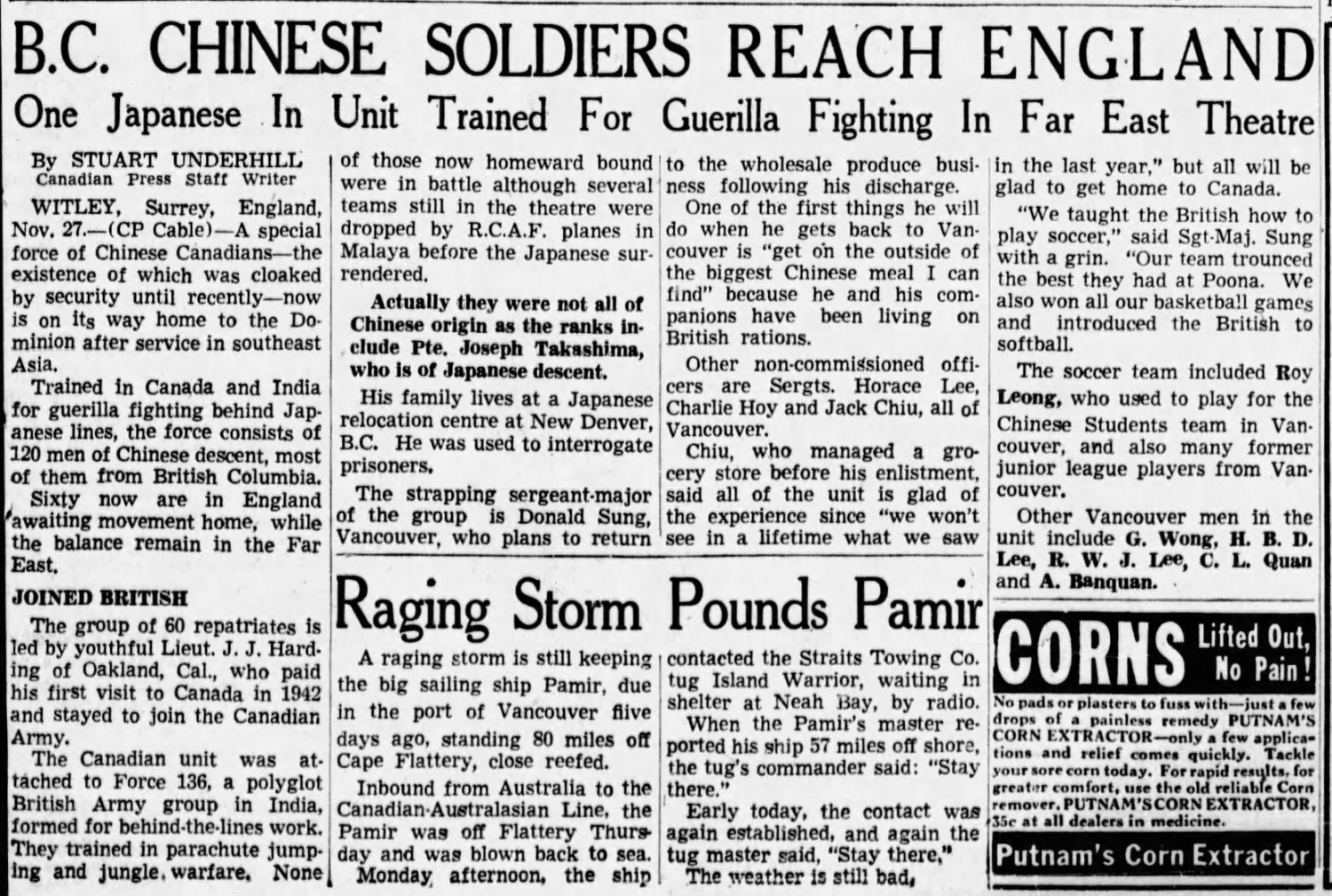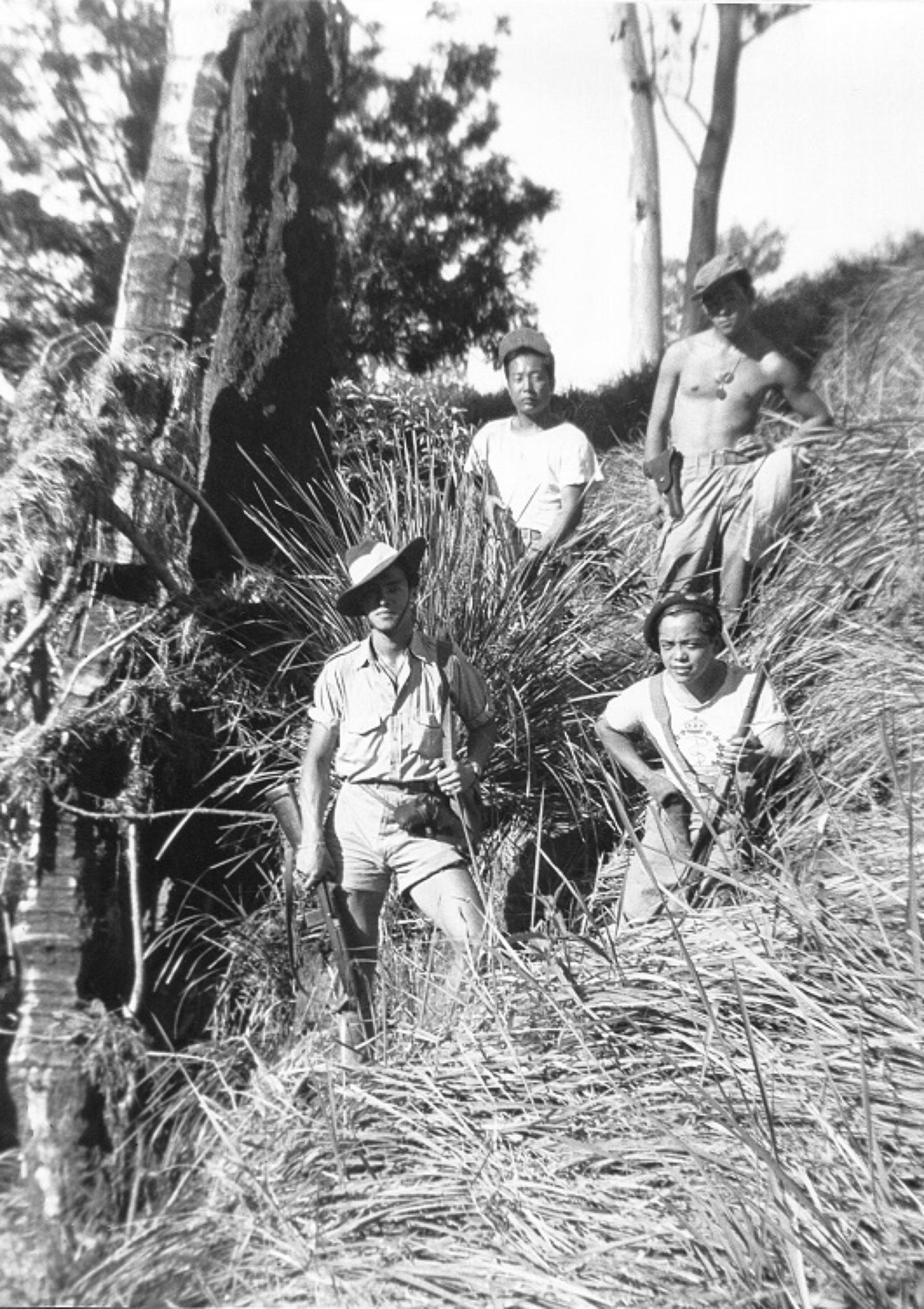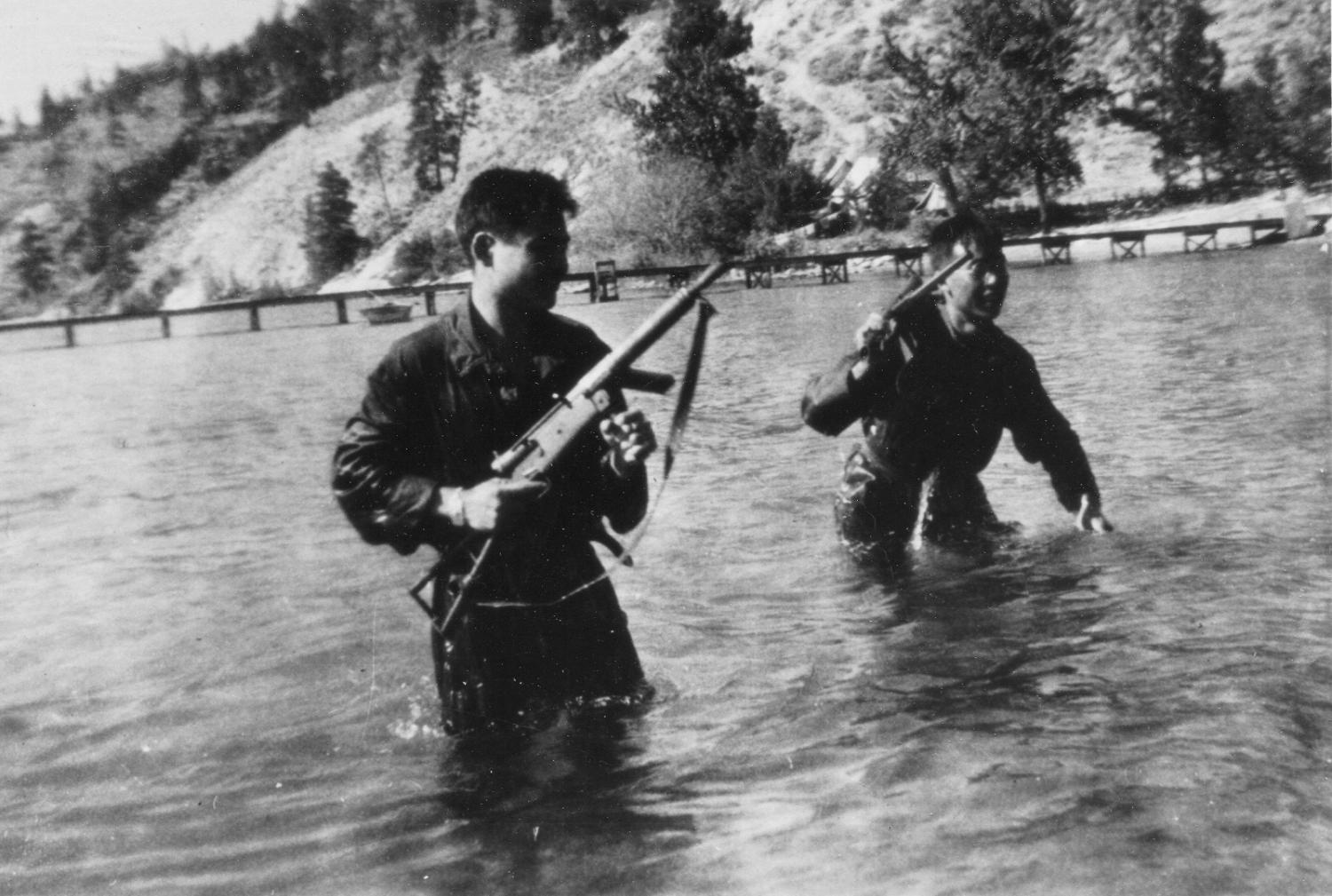Force 136
Chinese Canadians who fought in WWII come home to fight for civil rights
Date: 1944
Many Chinese Canadians saw the Second World War as an opportunity to prove their loyalty to Canada. Hundreds of young men enlisted to fight, but most were turned away because of their race. Some determined young men even travelled to other provinces to try and get in. Government officials in British Columbia worried that Chinese-Canadian soldiers — who couldn’t vote, live in certain neighbourhoods or work many professions — might demand fuller rights after returning from battle. But as Japan roared through Southeast Asia, the British military became more interested in recruiting those previously shown the door. Once rejected due to their race, young Chinese men were now sought after because of it — uniquely capable of haphazardly blending in among locals in Japanese held-territory. In 1944, Canada reversed its policy of restricting Chinese people from military service.
In the war’s final two years, Britain recruited about 150 Chinese Canadians to join Force 136, a clandestine squad of guerrilla fighters tasked with infiltrating Japanese strongholds in Southeast Asia. After training, the young men — most from B.C. — parachuted into the jungles of what is now Myanmar, Borneo, Singapore, and Malaysia. They engaged in espionage, sabotaged Japanese infrastructure, aided local militias, liberated prisoners-of-war, and more.
The risk of these covert missions was not lost on the men. "We never thought of coming back home because we knew once we went into Burma either we surrender, or the Japanese would take us prisoner, or we'd be dead," recalled Ronald Lee, a member of Force 136 from Vancouver, years later. If the Japanese did capture them, the military had ordered the soldiers to swallow cyanide pills.
Being captured only represented one danger; nature proved an equally frightening foe. Aggressive monkeys, venomous snakes and other life-threatening creatures roamed the harsh wilderness soldiers endured for months with no outside support. Severe heat and monsoon rain became a familiar struggle, as did bouts of malaria, jaundice and dysentery. Despite all of this, every Chinese-Canadian member of Force 136 who deployed survived their time in the jungle.
After the war, most sailed back to Canada via England, except those stationed in Australia, who the British military left to find their own way home. Many only made it back to B.C. by working as deckhands on cargo ships headed to North America. All returned to life as second-class citizens.
But life for Chinese Canadians soon began to improve. Immediately following the war, members of Force 136 started to fight for equal rights. In 1945, the provincial legislature enfranchised Chinese-Canadian veterans, along with service members of Japanese, South Asian and Indigenous descent. By 1947, Chinese Canadians had secured the right to vote in both provincial and federal elections. With the repeal of an anti-Chinese immigration law that same year, Chinese families long separated by an ocean could finally reunite in Canada. Other discriminatory practices, such as restrictions on certain professions, also began to fall by the wayside. All of this progress opened the door in 1957 to the first Chinese Canadian elected to the House of Commons. His name was Douglas Jung, a member of Force 136 from Victoria, British Columbia.
Sources:
1. Bains, Camille. Chinese-Canadian Veterans Fought in Secret WWII Unit, Helped Changed Laws. The Globe and Mail/The Canadian Press, 10 Nov. 2017, www.theglobeandmail.com/news/national/chinese-canadian-veterans-fought-in-secret-wwii-unit-helped-changed-laws/article36902597/.
2. A Brief Chronology of Chinese Canadian History. David Lam Centre at Simon Fraser University, www.sfu.ca/chinese-canadian-history/chart_en.html.
3. Chan, Arlene. Chinese Immigration Act. The Canadian Encyclopedia, 7 Mar. 2017, www.thecanadianencyclopedia.ca/en/article/chinese-immigration-act.
4. Chinese Canadian History. Chinese Canadian Military Museum Society, www.ccmms.ca/chinese-canadian-history/.
5. Chiu, Victoria. Searching for San Tung, a Chinese-Canadian Who Volunteered for World War I. The Toronto Star, 6 June 2019, www.thestar.com/opinion/contributors/2019/06/06/searching-for-san-tung-a-chinese-canadian-who-volunteered-for-world-war-i.html.
6. Clement, Catherine. Chinese Canadians of Force 136. The Canadian Encyclopedia, 21 Feb. 2019, www.thecanadianencyclopedia.ca/en/article/chinese-canadians-of-force-136.
7. Force 136. Chinese Canadian Military Museum Society, www.ccmms.ca/features/the-story-of-force-136/.
8. Friedman, Melinda. Force 136: Chinese Canadian Heroes. Telus STORYHIVE, 10 Nov. 2017, www.youtube.com/watch?v=zyR-45QROac.
9. Lee, Carol F. The Road to Enfranchisement: Chinese and Japanese in British Columbia. BC Studies, Summer 1976, ojs.library.ubc.ca/index.php/bcstudies/article/download/883/922/0.
10. Maxwell, Judy. A CAUSE WORTH FIGHTING FOR: Chinese Canadians Debate Their Participation in the Second World War. University of British Columbia , Sept. 2005, open.library.ubc.ca/media/stream/pdf/831/1.0099842/2 .
11. “Soldiers & Veterans.” Chinese Legacy BC, Province of British Columbia, www2.gov.bc.ca/gov/content/governments/multiculturalism-anti-racism/chinese-legacy-bc/history/soldiers-veterans.
12. Stories of Chinese-Canadian Soldiers Highlighted at Vancouver Museum. CBC News, 9 May 2015, www.cbc.ca/news/canada/british-columbia/chinese-canadian-soldiers-honoured-for-ww-ii-efforts-at-new-museum-exhibit-1.3068056.





